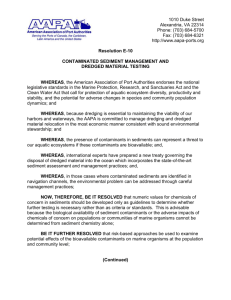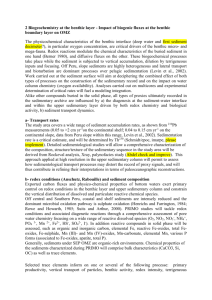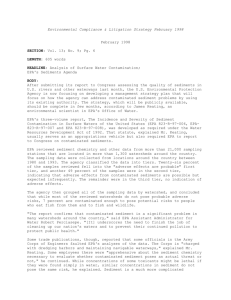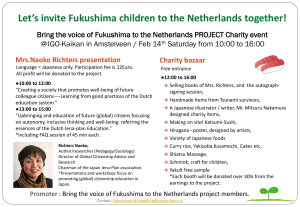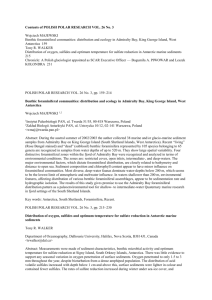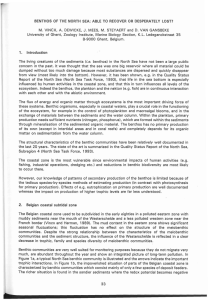PICES Abstract Formatting Details (5 February 2003)
advertisement
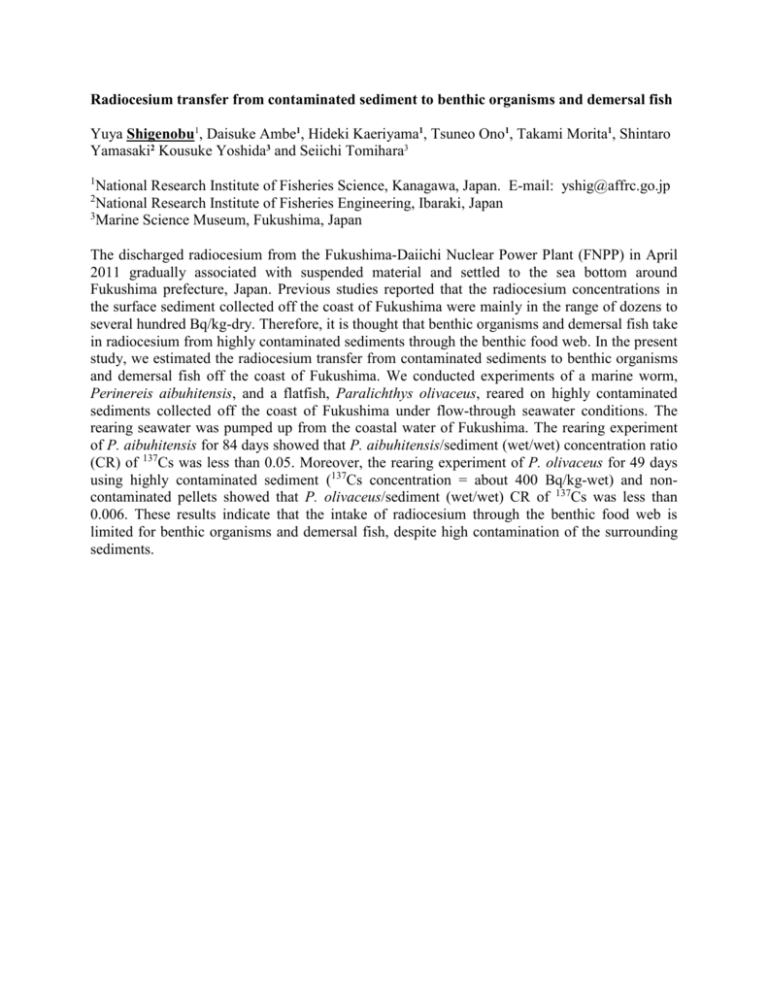
Radiocesium transfer from contaminated sediment to benthic organisms and demersal fish Yuya Shigenobu1, Daisuke Ambe1, Hideki Kaeriyama1, Tsuneo Ono1, Takami Morita1, Shintaro Yamasaki2 Kousuke Yoshida3 and Seiichi Tomihara3 1 National Research Institute of Fisheries Science, Kanagawa, Japan. E-mail: yshig@affrc.go.jp National Research Institute of Fisheries Engineering, Ibaraki, Japan 3 Marine Science Museum, Fukushima, Japan 2 The discharged radiocesium from the Fukushima-Daiichi Nuclear Power Plant (FNPP) in April 2011 gradually associated with suspended material and settled to the sea bottom around Fukushima prefecture, Japan. Previous studies reported that the radiocesium concentrations in the surface sediment collected off the coast of Fukushima were mainly in the range of dozens to several hundred Bq/kg-dry. Therefore, it is thought that benthic organisms and demersal fish take in radiocesium from highly contaminated sediments through the benthic food web. In the present study, we estimated the radiocesium transfer from contaminated sediments to benthic organisms and demersal fish off the coast of Fukushima. We conducted experiments of a marine worm, Perinereis aibuhitensis, and a flatfish, Paralichthys olivaceus, reared on highly contaminated sediments collected off the coast of Fukushima under flow-through seawater conditions. The rearing seawater was pumped up from the coastal water of Fukushima. The rearing experiment of P. aibuhitensis for 84 days showed that P. aibuhitensis/sediment (wet/wet) concentration ratio (CR) of 137Cs was less than 0.05. Moreover, the rearing experiment of P. olivaceus for 49 days using highly contaminated sediment (137Cs concentration = about 400 Bq/kg-wet) and noncontaminated pellets showed that P. olivaceus/sediment (wet/wet) CR of 137Cs was less than 0.006. These results indicate that the intake of radiocesium through the benthic food web is limited for benthic organisms and demersal fish, despite high contamination of the surrounding sediments.



